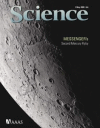 For the health agencies battling swine flu (recently renamed H1N1), it’s a tricky balance: Be honest and clear without setting off a panic. Officials at the World Health Organization, the U.S. Centers for Disease Control and Prevention, and its European counterpart, the European Centre for Disease Prevention and Control (ECDC), are striving to strike the right tone, a challenge made all the more difficult by a sudden onslaught of media inquiries that threaten to overwhelm their systems.
For the health agencies battling swine flu (recently renamed H1N1), it’s a tricky balance: Be honest and clear without setting off a panic. Officials at the World Health Organization, the U.S. Centers for Disease Control and Prevention, and its European counterpart, the European Centre for Disease Prevention and Control (ECDC), are striving to strike the right tone, a challenge made all the more difficult by a sudden onslaught of media inquiries that threaten to overwhelm their systems.In 2004, WHO began reconsidering how it shared information on pandemics with the public, and the following year it released its five “outbreak principles,” based partly on lessons learned from SARS. “We struggled through SARS, [and] we really didn’t have a lot of risk-communication resources or training to call on,” says Dick Thompson, who joined WHO’s communications office in 2001 after 23 years as a journalist at Time magazine.

The agencies are managing by running daily press briefings (during which they inevitably take fewer questions than journalists are asking), setting up media hot lines, and working late into the night to accommodate different time zones. They’re beefing up their staff and relying on training they’ve received in “outbreak communications.”
Since then, WHO began emphasizing trust, early announcements, and transparency. “We trained officials from over 120 ministries of health and dozens of journalists” in these principles, says Thompson, now a consultant who’s running the WHO media response to H1N1. “Very often, countries are reluctant to say anything” about a disease outbreak, and when they do they “overreassure.” But really, he says, “you need to announce early: People are sick, people are dying. You have to talk about that.” Sometimes, transparency means saying you have no idea what will happen—as officials, in typically soothing voices, have repeated again and again in media briefings this week.
Formato: PDF
Tamanho: 18.3 Mb
Download Easyshare
Download Ziddu












0 comentários:
Postar um comentário